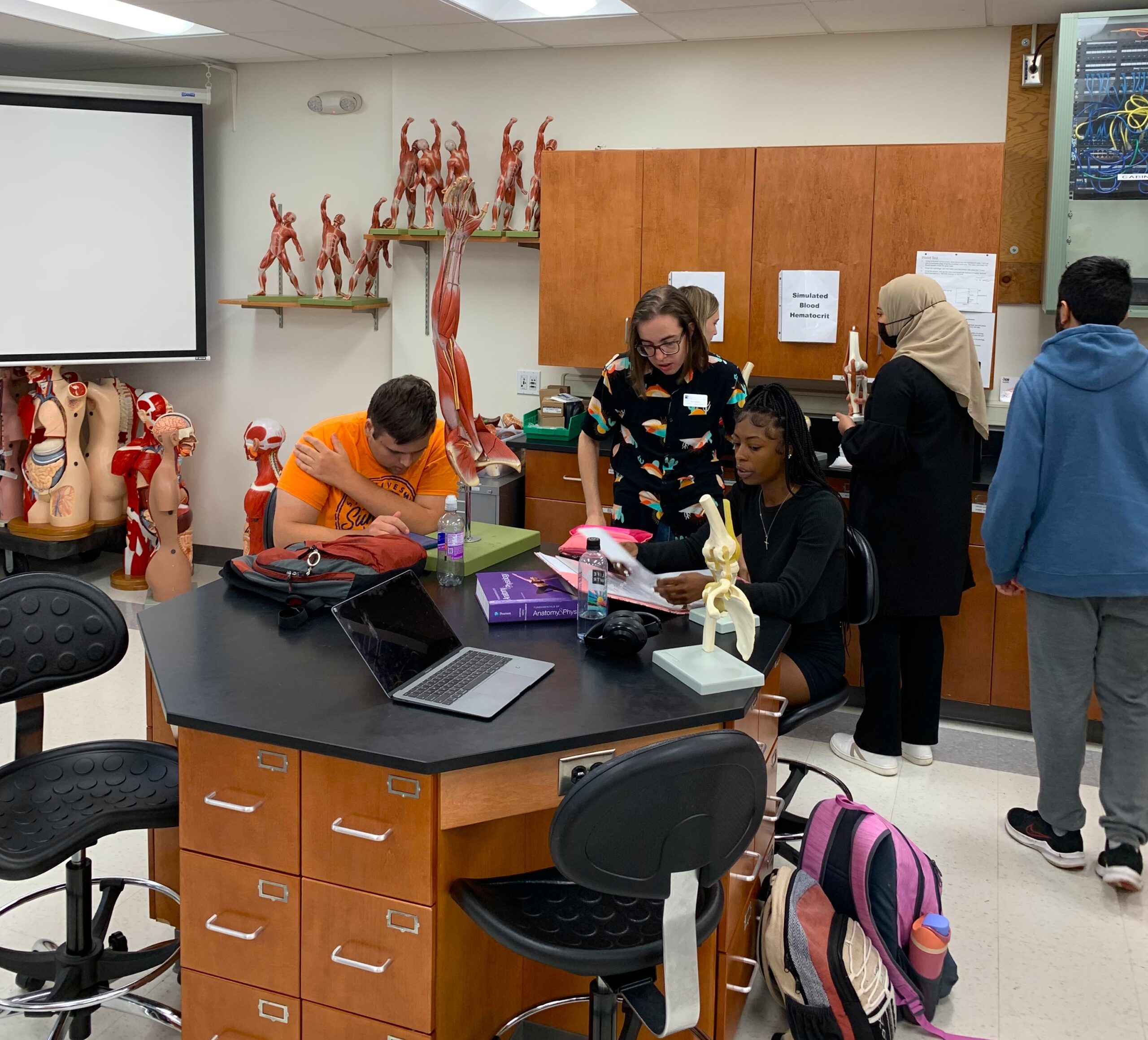Holocaust survivor tells her story at Meramec
Carlos Restrepo
– Editor in Chief-
Until she was three, Felicia was a Jewish girl living in a ghetto in Warsaw, Poland. One day that changed. She could no longer be Jewish. She could no longer keep her birth name of Felicia Lederberger.
She was turned Catholic and her name was changed to Franciszka Felicja Slusarcyk. Her past was buried by the need to survive.
Now Felicia Graber, Holocaust survivor, told her story at STLCC-Meramec onFeb. 1, 2010, to a room full of faculty, students and community members.
“Faces of Israel” is an hour-long presentation Graber has shared around the United States, entailing her story of survival and spreading awareness of the Holocaust.
Graber’s presentation focused on her life as a child in Nazi-invaded Poland, and on the other children who were there at that time.
“From the six million Jews that were murdered, one-and-a-half million were children,” Graber said.
Graber came close to being one of those children.
Born in 1940, Graber lived with her parents in Warsaw. One day, they were forced to move to the ghetto. They lived in a building that held up to 100 people to hide from Nazi killing sprees. Graber said Nazi law did not allow more than one child per family, and many children had to hide in an attic for hours with no food or water.
“Some children were crammed in halls and had to learn how to walk after the war,” Graber said. “Now the very little ones could not be put in a hiding place, so many parents gave their babies up to Christian families who were willing to take them in. Some of these children were put on the steps of a church, a convent, a monastery or somebody’s home with a note saying ‘please take care of my baby.’”
Many children who survived were reunited with their families. Others, however, lived their entire lives with their Christian family, not knowing of their Jewish past.
“Many of these parents would call their children on their deathbed and say ‘I have something to tell you: you are not my child. We found you on the steps; you are from Jewish parents,” Graber said. “So now we have people in their 60s and 70s trying to figure out ‘Who am I?’ and trying to find somebody who might know something about their family.”
Graber said that fortunately for her, her parents kept her.
“I was never given away. I was never separated from my mother and both my parents survived,” Graber said.
One morning, the Nazis ordered all children to leave the ghetto to be taken “some place else.” That day, Graber’s parents made the first of many choices that would keep them and their child alive.
“There was no doubt in anybody’s mind that ‘some place else’ was not good,” Graber said. “The question was, ‘Do parents let the children go by themselves, or do they accompany the child?’ I sincerely hope and pray that no adult ever has to make that choiceless choice again.”
Graber’s parents decided that they would both come with their child.
“So together with thousand of thousands of other children and some adults, we were taken to a train station to be taken, probably to Auschwitz,” Graber said.
That night there were no trains, so in the meantime a Jewish councilman who knew Graber’s family convinced the German soldiers to let the family go back to the ghetto. They were saved for that night.
Upon return, Graber’s father managed to get fake documents that identified Graber and her mom as a German Catholics. Both mother and daughter escaped Warsaw. The father reunited with them later on.
“Every evening my training was to repeat that my name was Felicia Slusarcyk, and that I was a Roman Catholic,” Graber said. “I was taught the Lord’s Prayer and was taken to Mass every Sunday. I became totally immersed in Catholicism and the idea that I was Jewish disappeared in my conscious mind.”
Graber and her family lived in a farm in the countryside of Poland, still under fake identities, until they moved to Ally-occupied West Germany. There she learned she was not Catholic, but Jewish, and her name was not Felicia Slusarcyk but Felicia Lederberger.
Graber said it was easy for her to accept the fact that she was not Catholic, but Jewish.
“It felt right. It was like a fish going back to water,” Graber said.
In Germany she met a Jewish man from St. Louis. She married him and left Germany to live with him.
“I think America is just the most wonderful country in the world. It’s the only place in the world where anyone can be what they want to,” Graber said.
Graber is the founder of the Hidden Child/Child Survivor Group of St. Louis and the co-founder of the St. Louis Descendants of the Holocaust, a group of children and grandchildren of Holocaust survivors and victims.
She is a member of the Memory Project at the St. Louis Holocaust Museum and Learning Center.
Graber gives lectures at schools and universities, reminding the public that the choices they make count in the future.
“Just remember that you can make a difference,” Graber said. “Don’t go with the crowd. Listen to your consciousness and act accordingly.”











